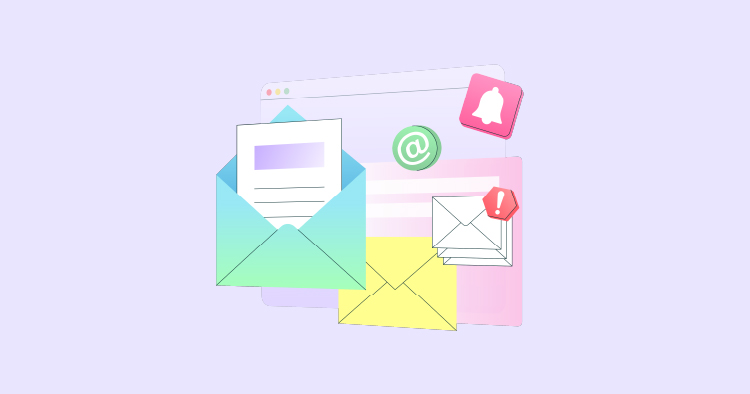Building an effective email sales funnel is a critical strategy for businesses aiming to nurture leads and boost customer engagement. It’s a process that transforms prospects into loyal customers by guiding them through a well-structured sequence of emails, each designed to move them to the next stage of the buying journey. By understanding your audience’s needs and crafting personalized content, you can establish a connection that increases engagement and drives sales. This article will delve into the critical steps for creating an email sales funnel that resonates with your target market and maximizes your campaign’s success.
Understanding Email Sales Funnels
An email sales funnel is like a guided path that leads potential customers closer to purchasing with each email they receive. It’s a series of messages that start when someone first gives you their email address and continues until they buy something. Along this path, you’re not just sending random emails; you’re carefully planning each message to ensure it’s just what the potential customer needs to hear at that point in their journey.
The beauty of email sales funnels is that they’re set up to match where the person is in the buying process. This means that each email feels relevant and exciting, keeping them engaged. By sharing helpful information when it’s most needed, you’re guiding prospects to decide to buy, which leads to more sales and a more involved audience.
A solid email sales funnel can do wonders for your marketing. It lets you sort your audience into different groups based on their interests and where they are in the buying process, send messages that hit the mark, and build strong customer relationships. All this work pays off by increasing your sales and turning one-time buyers into loyal fans.
Setting Goals for Your Email Sales Funnel
Before creating an email sales funnel, you must know who you’re talking to and what they’re looking for. When you have a good understanding of your audience, you can write emails that feel personalized to them, including offers and content that they will find helpful and engaging.
Your email funnel should have clear goals. Maybe you want to sell more of a particular product, get more people involved with your content, or increase the number of people signing up for your emails. Whatever your aims, having them set out means you can track how well your funnel is working and make changes if needed.
It’s also crucial that your email funnel goals fit neatly with the bigger picture of your marketing plans. When your email and overall marketing strategies work together, you create a powerful, unified push toward your business goals, making your marketing more robust and focused.
Creating an Irresistible Lead Magnet
A lead magnet is like a trade between you and your website visitors: they give you their email address, and you give them something valuable in return. This could be a free eBook, an exclusive webinar, a set of discount codes, or a trial period for a service. The key is to know what your audience will find helpful and give them precisely that.
Struggling with Digital marketing? Book Your Free Strategy Session!
- 30-Minutes Session
- Expert Insights
- Data-Driven approach
- Optimized Strategies for Your Goals
To make your lead magnet appealing, your opt-in form must grab attention and convince people to act. Explain what they’ll gain by subscribing and use exciting language about the offer. More visitors will likely sign up if your form is clear and engaging, boosting your list growth.
Building a High-Converting Landing Page
Think of your landing page as your online storefront’s display window. It should be neat and inviting and clarify what you’re offering. You want to catch the eye of passersby and draw them in. This means having a headline that grabs attention, a brief but compelling description of your offer, some attractive images or graphics, and a strong, clear call to action, like “Sign Up Now” or “Get Your Free Trial.”
To turn visitors into leads or customers, your landing page needs to work well on any device, load quickly, and match the message of your email campaigns. Monitor its performance and make changes as required. Sometimes, even minor tweaks can make a big difference in the number of people who take the action you want them to.
Creating a Welcome Email Sequence
When someone signs up to your email list, they walk through your digital front door. Your welcome email is the friendly hello that greets them. It’s essential to make an excellent first impression, so warmly welcome them, thank them for their interest, and let them know what cool stuff they can expect from you.
Using their name in the email can make a difference. It’s like when someone you just met remembers your name–it feels good. That’s the feeling you want to give your new subscribers. Plus, if you throw in something valuable, like a helpful tip or a special discount, they’ll feel like they’ve hit the jackpot just by signing up.
Nurturing Subscribers with Engaging Email Content
Think of your email list like a garden–it needs care and attention to grow. You can send personalized emails by understanding who is on your list and what they are interested in. Whether it’s a special sale for fashionistas or a how-to guide for DIYers, knowing your audience makes all the difference.
Look at what they tell you to create ideas that will click with your subscribers. Maybe you’ve got survey results or can see which emails they open the most. Use that info to craft content that they’ll look forward to.
And don’t forget the power of a good story. Stories can make your emails more than just information–they can turn them into experiences that create a lasting bond with your subscribers. When you tug at their heartstrings or get them excited about something, that’s when you’re building a relationship that goes beyond the inbox.
Implementing Effective Call-to-Actions (CTAs)
Creating effective Call-to-Actions (CTAs) is like giving your subscribers a clear map to follow. These CTAs are the buttons or links that encourage your readers to take action, such as “Buy Now,” “Learn More,” or “Sign Up.” They’re vital because they tell your subscribers exactly what you want them to do next, helping them move smoothly from showing interest in your product to purchasing it.
Struggling with Digital marketing? Book Your Free Strategy Session!
- 30-Minutes Session
- Expert Insights
- Data-Driven approach
- Optimized Strategies for Your Goals
A good CTA is easy to spot, straightforward, and prompts action. It should be eye-catching and match the overall message you’re sending. To make your CTAs more tempting, use exciting language that makes people feel they’ll miss out if they don’t act quickly.
But don’t just set and forget your CTAs. Try different styles, words, and placements to see what resonates most with your audience. Monitor the number of clicks each CTA gets and use that data to improve it further. This way, you’ll constantly improve and make your emails more effective.
Leveraging Automation Tools for Efficiency
Using email marketing automation tools is like having an intelligent assistant who knows when to send your emails. These tools help you send the right message at the right time without sending each one manually. This is perfect for keeping in touch with your subscribers without needing to be at your computer all day and night.
When picking an automation tool, consider how easy it is to use, if it works well with other systems you use, whether it can grow with your business, and how much it costs. The ideal tool fits what your business is aiming to achieve and helps you reach your marketing goals with no extra hassle.
Setting up automated workflows can be a game-changer. These are the rules that decide when someone receives a specific email. For example, if someone signs up for your newsletter, they could receive a welcome email automatically. This means you can keep your subscribers engaged and moving through the sales funnel without lifting a finger every time.
Analyzing and Tracking Email Metrics
Monitoring key email metrics is crucial for assessing the success of your email campaigns. Open rates tell you how many people are looking at your emails, while click-through rates show how many are engaged enough to click on links within your emails. Conversion rates are significant because they indicate how many clicks turn into actual sales or desired actions. And don’t forget about unsubscribe rates; they can tell you whether your content is hitting the mark or driving subscribers away.
Analytics tools are your best friend for digging deep into your email campaign’s performance. They shed light on how subscribers interact with your emails, from when they open them to where they take action. This detailed information is gold when understanding what’s working and what’s not, allowing you to tweak your approach for better results.
When you have solid data, deciding becomes a lot easier. Use the insights you gather to keep polishing your email sales funnel. The aim is to make every email more engaging and effective than the last, which can lead to better performance and a more engaged audience.
Implementing A/B Testing for Continuous Improvement
If you want to get more out of your email sales funnel, you can’t overlook A/B testing or split testing. By comparing two versions of an email to see which one performs better, you can uncover what appeals to your subscribers.
You’ve got plenty of options regarding what you can test. Try out different subject lines to see which ones get more opens, or change your email content to find out what keeps readers hooked. Your email’s design and layout can also affect how subscribers engage, and experimenting with different calls to action (CTAs) can help you determine what drives conversions.
Once you’ve run your tests, it’s time to learn from them. Look at how each version of your email performed and use those insights to improve your following emails. This process of testing, learning, and improving is an ongoing cycle that can keep your email sales funnel fresh and compelling, perfectly aligned with what your audience wants and expects.
Personalizing Email Campaigns for Enhanced Engagement
Email marketing becomes more powerful when it’s personalized. When you send out emails that greet your subscribers by name and touch on topics they care about, they’re more likely to pay attention. Using data about your subscribers, you can create content and offers that hit the mark, making your emails more relevant and increasing the chances of your subscribers taking action.
For example, imagine you run an online bookstore. You can recommend similar books or genres in your emails based on what customers have bought. Customers who see a book in their favorite series in your email are more likely to click and buy.
Looking at success stories from other businesses that have nailed personalized email campaigns can be enlightening. These stories show you what worked for them and can give you ideas for shaping your strategy.
Retaining Customers with Effective Follow-Up Emails
It’s crucial to keep the conversation going with your customers after they’ve bought something. Follow-up emails are a perfect way to do this. You can use them to suggest other products they might like, ask for their feedback, or give them special deals because they’ve shopped with you before.
These emails must add value to your customer’s experience. For instance, if someone has just bought a new camera from you, sending them tips on taking great pictures can be very helpful. Or, if there’s a sale coming up, giving them a heads-up can make them feel valued and special.
These emails are not just about selling but about building a relationship. When you show customers you know them and offer personalized discounts or points for a loyalty program, you’re not just encouraging another sale. You’re creating a bond that can turn a one-time buyer into a lifelong fan.
Optimizing Email Deliverability and Avoiding Spam Filters
Making sure your emails reach their intended recipients is crucial. To help with this, keeping your email list fresh and up-to-date is essential. This means asking people directly if they want to receive your emails and saying goodbye to subscribers who no longer interact with your content. Choosing a well-respected email service provider can also make a huge difference in getting your messages across.
Nobody likes their emails to land in the spam folder. To avoid spam filters, be mindful of your chosen words and focus on creating engaging and valuable content for your audience. Always give readers an easy way to opt out of your emails, and make it a habit to test your emails to see how well they’re being received.
A clean email list is like a well-tended garden; it leads to better engagement and keeps your messages from being ignored. Removing them might be best if you notice some subscribers aren’t interacting with your emails after a specific time. This helps keep your email list healthy and improves the chances of opening and reading your emails.
Integrating Social Media and Email Marketing for Amplified Results
Combining the powers of social media and email marketing can take your marketing efforts to the next level. Each channel complements the other, expanding your reach and creating more opportunities to connect with your audience.
Social media can help you spread the word about your email campaigns and reach more people. Encourage your social media followers to sign up for your emails and give them a taste of the valuable content they can expect by sharing snippets on your social profiles.
Adding social proof to your emails, such as customer reviews or content created by other users, can boost your credibility and make people more likely to engage with your brand. This could lead to more people taking action, like purchasing or signing up for a webinar, precisely what you want from your marketing campaigns.
Implementing Split Testing for Continuous Improvement
Split testing, or A/B testing, is a powerful tool for improving your email sales funnel. By comparing different versions of your emails, you can see which elements engage your audience the most.
Why Split Testing Matters
Split testing allows you to make data-driven decisions about your email strategy. Instead of guessing what might work, you can use actual results to guide your tweaks and changes.
What to Test in Your Emails
You can test almost anything in your emails, but start with the basics:
– Subject Lines: These are crucial because they influence whether someone opens your email. Try different tones, lengths, and topics to see what grabs attention.
– Content Layouts: The arrangement of text and images can affect readability and engagement. Experiment with different formats to find the most appealing layout.
– Images: Visuals can make your emails more engaging, but only if they resonate with your audience. Test various images to see which ones enhance your message.
– Calls to Action (CTAs): These prompts tell your readers what to do next. Test different wording, colors, and placement to find the most effective CTAs.
When you run a split test, look at key metrics like open, click-through, and conversion rates. These numbers will tell you which version of your email is performing better.
After you gather your test results, use what you’ve learned to refine your emails. Regular updates to your email sales funnel can lead to better performance and more sales.
Remember, split testing is an ongoing process. The more you test and improve, the more you understand your audience and what motivates them to act. Keep refining your approach, and you’ll continue to get better results from your email campaigns.
Final Thoughts
The success of an email sales funnel hinges on its ability to engage and convert prospects into customers. It requires a thoughtful approach that considers the unique journey of your audience from initial contact to final purchase. By continuously analyzing and refining your strategy, you can ensure that your funnel remains practical and relevant. Remember, an email sales funnel is not just about selling; it’s about building lasting relationships that foster trust and loyalty, ultimately leading to higher engagement and increased revenue for your business.



